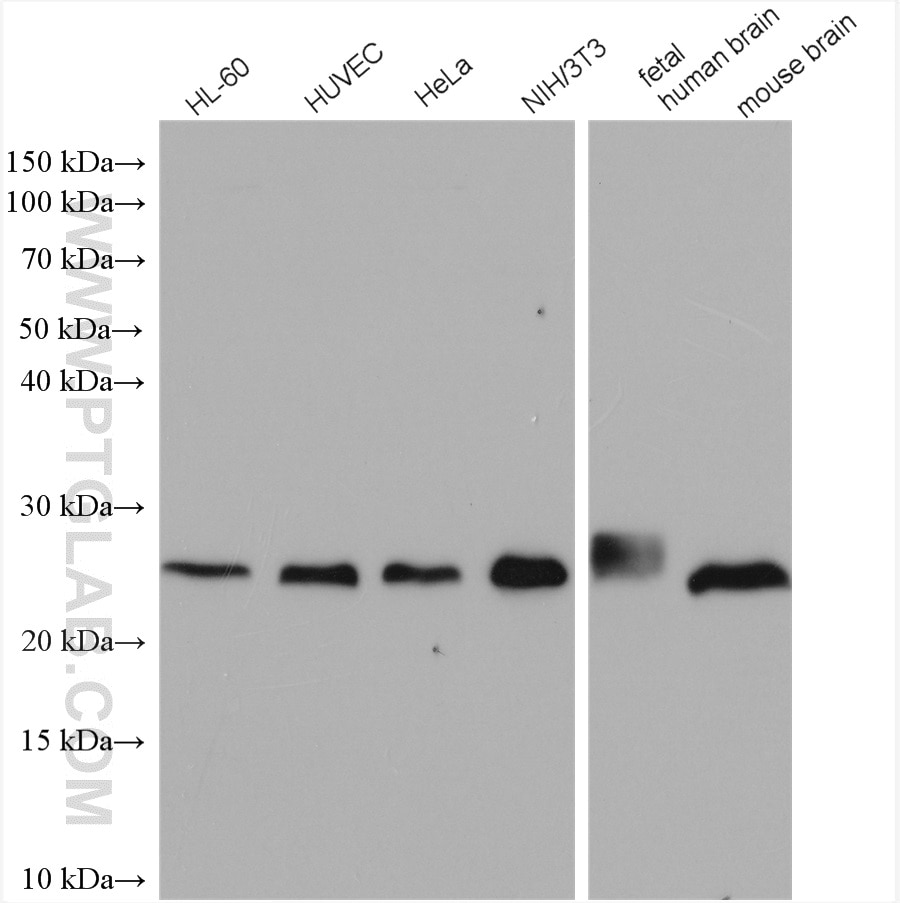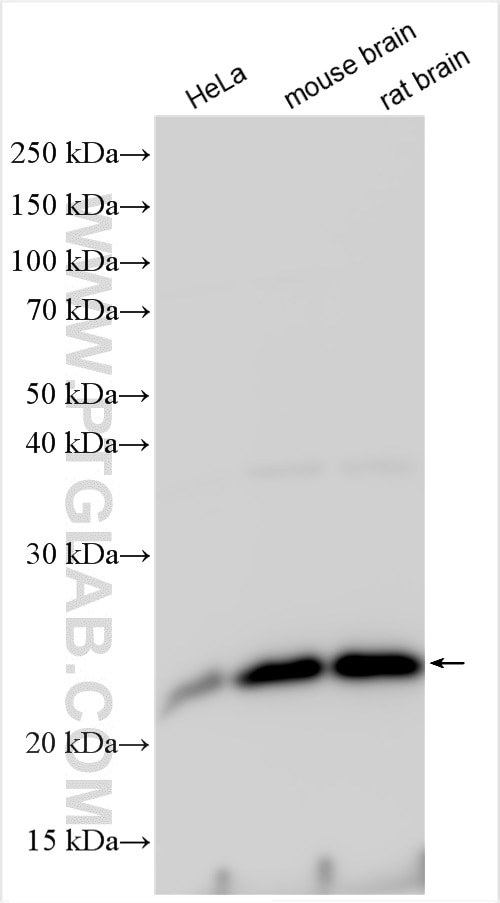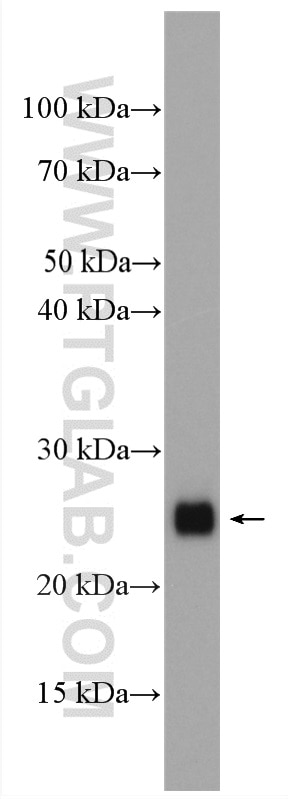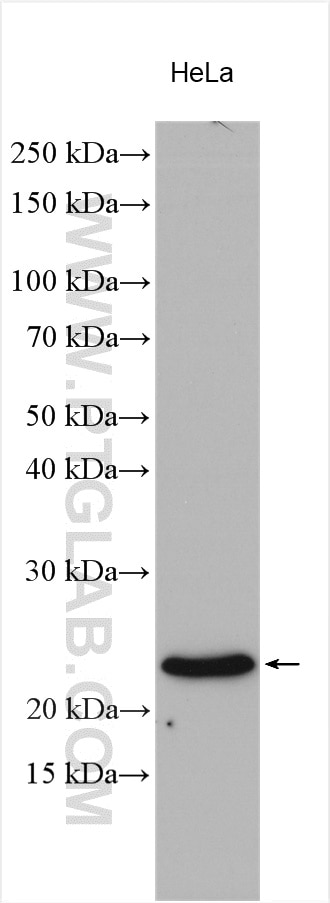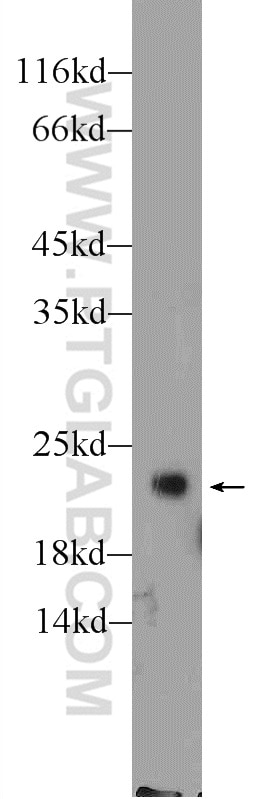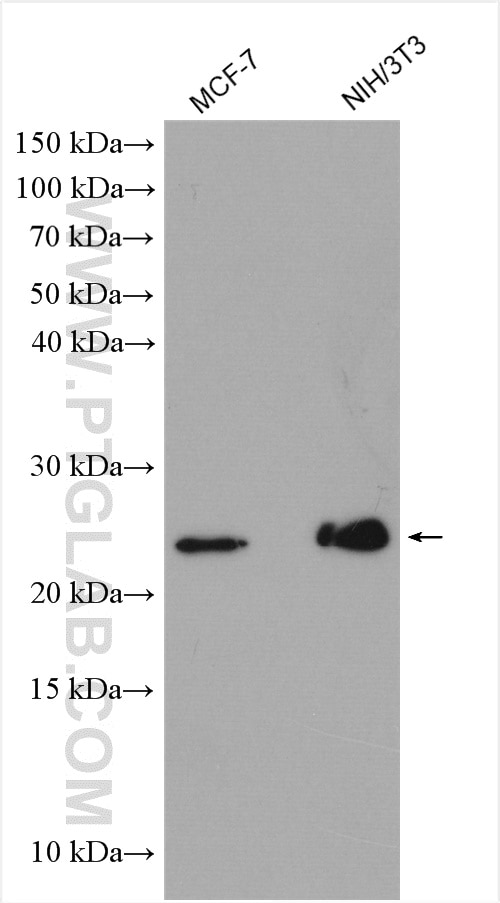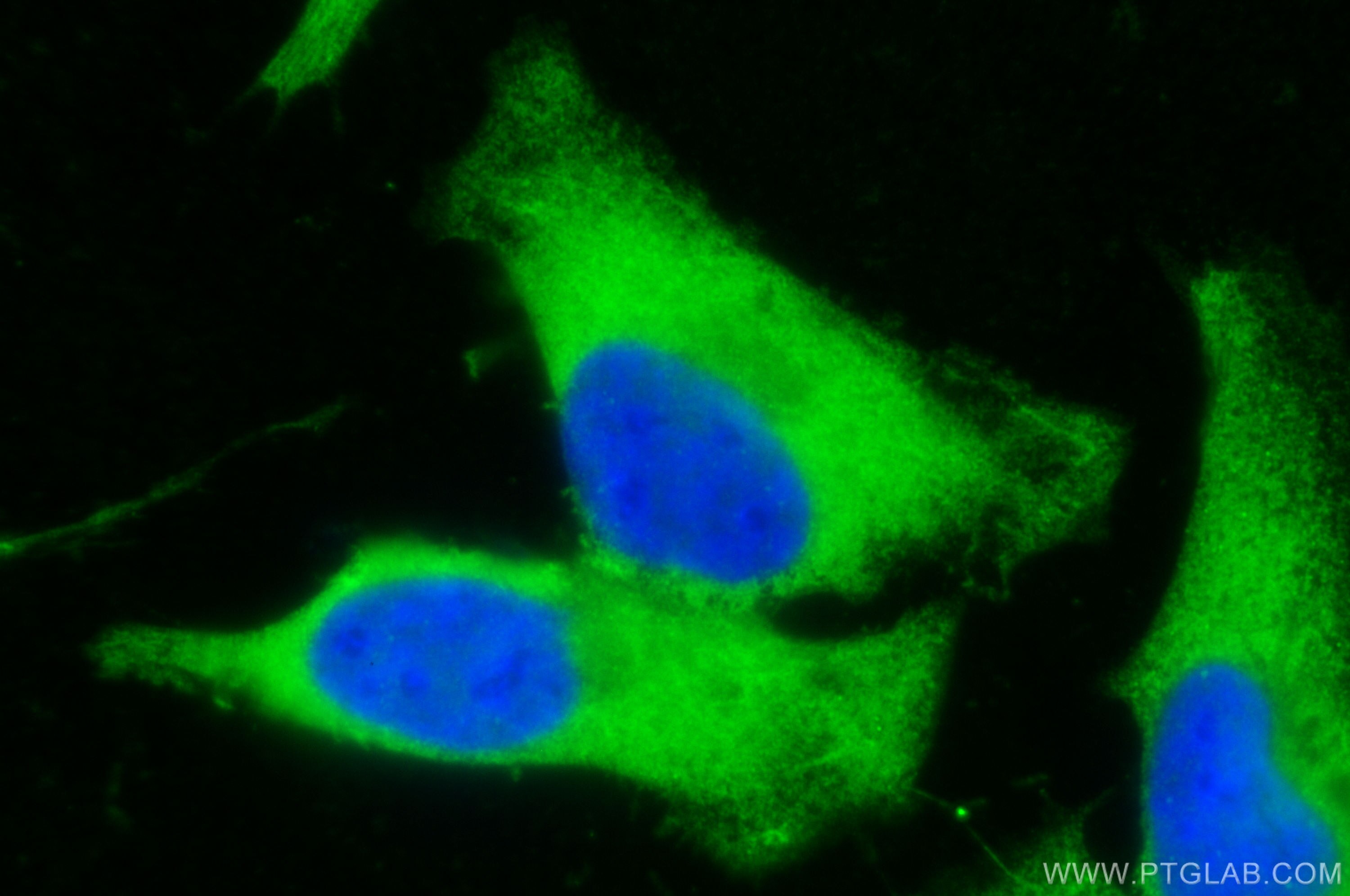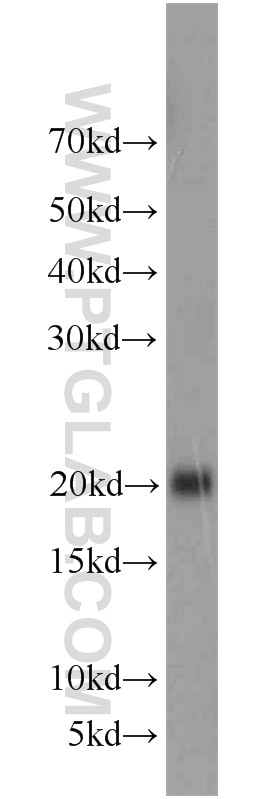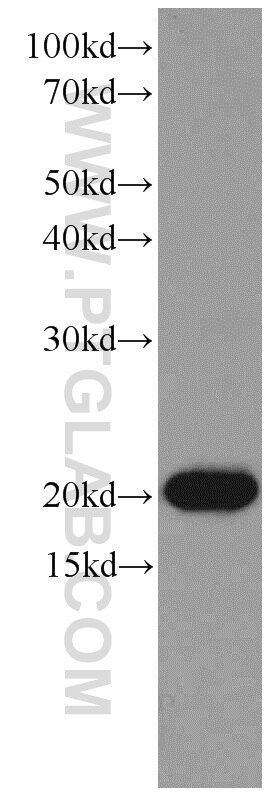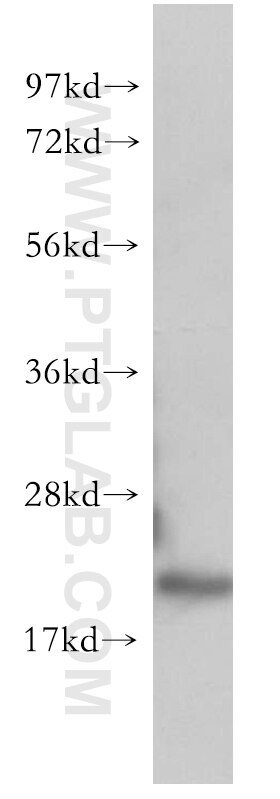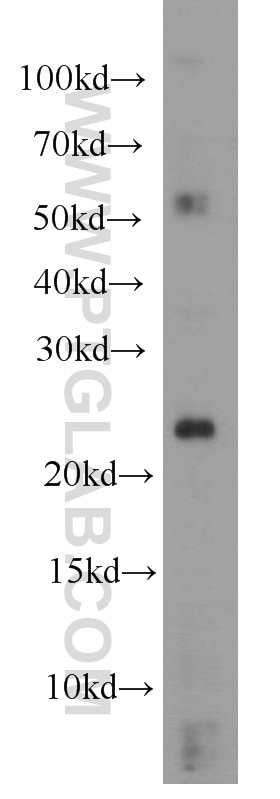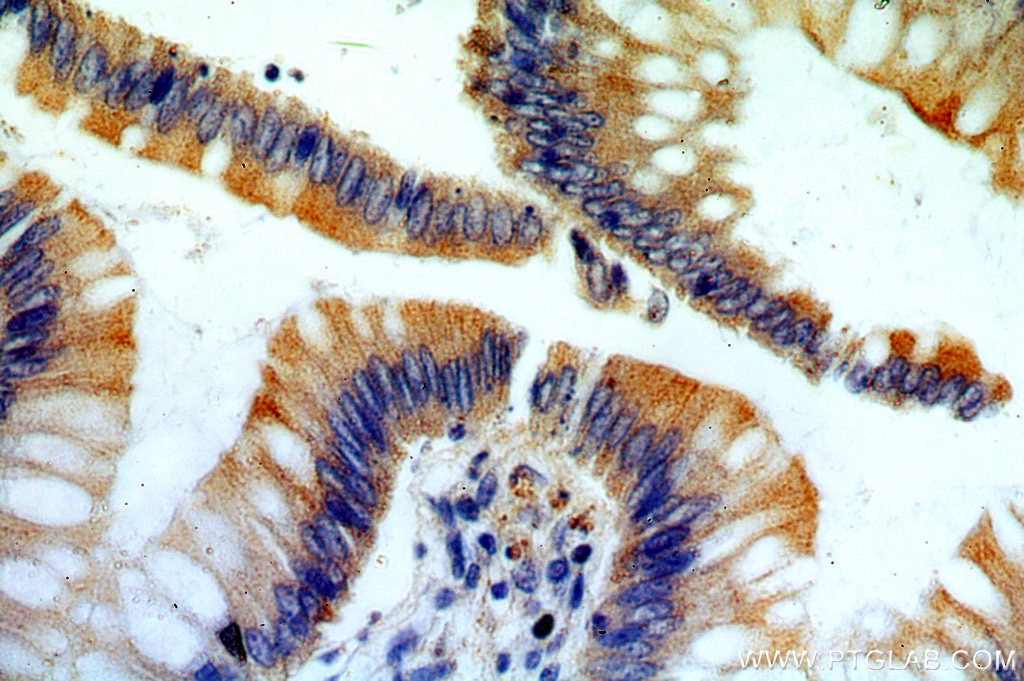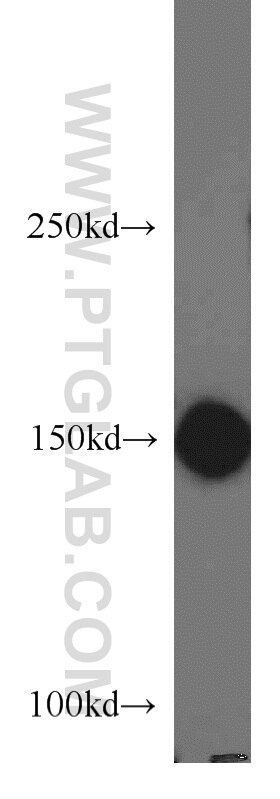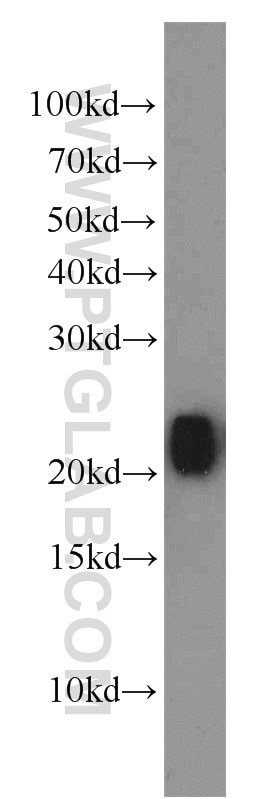- Phare
- Validé par KD/KO
Anticorps Polyclonal de lapin anti-RHOA
RHOA Polyclonal Antibody for WB, IF, ELISA
Hôte / Isotype
Lapin / IgG
Réactivité testée
Humain, rat, souris et plus (2)
Applications
WB, IHC, IF/ICC, ELISA
Conjugaison
Non conjugué
138
N° de cat : 10749-1-AP
Synonymes
Galerie de données de validation
Applications testées
| Résultats positifs en WB | cellules HL-60, cellules HeLa, cellules HUVEC, cellules MCF-7, cellules NIH/3T3, cellules PC-12, tissu cérébral de rat, tissu cérébral de souris, tissu cérébral humain fœtal |
| Résultats positifs en IF/ICC | cellules HeLa, |
Dilution recommandée
| Application | Dilution |
|---|---|
| Western Blot (WB) | WB : 1:500-1:2000 |
| Immunofluorescence (IF)/ICC | IF/ICC : 1:200-1:800 |
| It is recommended that this reagent should be titrated in each testing system to obtain optimal results. | |
| Sample-dependent, check data in validation data gallery | |
Applications publiées
| KD/KO | See 3 publications below |
| WB | See 126 publications below |
| IHC | See 15 publications below |
| IF | See 13 publications below |
Informations sur le produit
10749-1-AP cible RHOA dans les applications de WB, IHC, IF/ICC, ELISA et montre une réactivité avec des échantillons Humain, rat, souris
| Réactivité | Humain, rat, souris |
| Réactivité citée | rat, canin, Humain, porc, souris |
| Hôte / Isotype | Lapin / IgG |
| Clonalité | Polyclonal |
| Type | Anticorps |
| Immunogène | RHOA Protéine recombinante Ag1141 |
| Nom complet | ras homolog gene family, member A |
| Masse moléculaire calculée | 22 kDa |
| Poids moléculaire observé | 22 kDa |
| Numéro d’acquisition GenBank | BC005976 |
| Symbole du gène | RHOA |
| Identification du gène (NCBI) | 387 |
| Conjugaison | Non conjugué |
| Forme | Liquide |
| Méthode de purification | Purification par affinité contre l'antigène |
| Tampon de stockage | PBS avec azoture de sodium à 0,02 % et glycérol à 50 % pH 7,3 |
| Conditions de stockage | Stocker à -20°C. Stable pendant un an après l'expédition. L'aliquotage n'est pas nécessaire pour le stockage à -20oC Les 20ul contiennent 0,1% de BSA. |
Informations générales
What is the function of RhoA?
Ras homolog gene family, member A (RhoA) is a small GTPase that is involved in cytoskeleton organization.1 It is important in actomyosin contractility, as when RhoA binds to GTP it initiates a cascade of events mediating stress fiber or contractile ring formation, where actin bundles crosslink with other proteins. It is also associated with actin polymerization, making RhoA important in membrane ruffling and cell motility.2 The role of RhoA is essential in cell migration and adhesion.
What is the cellular localization of RhoA?
In motile cells, a leading edge stretches ahead, stabilizes, the cytoskeleton is reorganized, and the tail of the cell retracts. The role of RhoA in contracting actomyosin has linked RhoA with the tail retraction in this process, but studies into the spatiotemporal kinetics of GTPases have revealed that RhoA is also located at the leading edge of migrating cells.3 This highlights the dual roles of this protein in actin contractility and polymerization.
What is the role of RhoA in disease?
Though it is not an oncogene, the role of RhoA in adhesion and migration has implicated this protein in cancer biology. Expression of RhoA has been found to be higher in malignant tumors compared to benign tumors or in non-tumor tissue, and more invasive tumors have been found to overexpress RhoA.4 This protein is also implicated in neurodegenerative diseases and aging due to its role in axon guidance, with abnormal localization of RhoA associated with Alzheimer's and Parkinson's pathology.5,6
1. Ridley, A. J. & Hall, A. The small GTP-binding protein rho regulates the assembly of focal adhesions and actin stress fibers in response to growth factors. Cell 70, 389-399 (1992).
2. 21. Kurokawa, K. & Matsuda, M. Localized RhoA Activation as a Requirement for the Induction of Membrane Ruffling. Mol. Biol. Cell 16, 4294-4303 (2005).
3. 22. Struckhoff, A. P., Rana, M. K. & Worthylake, R. A. RhoA can lead the way in tumor cell invasion and metastasis. Front. Biosci. (Landmark Ed. 16, 1915-26 (2011).
4. 23. Mcglasson, S. et al. Rare variants of the 3'-5' DNA exonuclease in early onset TREX1 small vessel stroke [version 1; referees: awaiting peer review]. doi:10.12688/wellcomeopenres.12631.1
5. 24. Huesa, G. et al. Altered Distribution of RhoA in Alzheimer's Disease and AβPP Overexpressing Mice. J. Alzheimer's Dis. 19, 37-56 (2010).
6. 25. Hynds, D. L. Subcellular localization of Rho GTPases: implications for axon regeneration. Neural Regen. Res. 10, 1032-3 (2015).
Protocole
| Product Specific Protocols | |
|---|---|
| WB protocol for RHOA antibody 10749-1-AP | Download protocol |
| IF protocol for RHOA antibody 10749-1-AP | Download protocol |
| Standard Protocols | |
|---|---|
| Click here to view our Standard Protocols |
Publications
| Species | Application | Title |
|---|---|---|
Nat Commun A mosquito salivary protein promotes flavivirus transmission by activation of autophagy. | ||
Circ. Res. Inhibition of KLF5-Myo9b-RhoA Pathway-Mediated Podosome Formation in Macrophages Ameliorates Abdominal Aortic Aneurysm. | ||
Acta Biomater Adipose-derived stem cells with miR-150-5p inhibition laden in hydroxyapatite/tricalcium phosphate ceramic powders promote osteogenesis via regulating Notch3 and activating FAK/ERK and RhoA | ||
Autophagy m6A mRNA methylation regulates testosterone synthesis through modulating autophagy in Leydig cells. | ||
Blood Annexin II interactions with the annexin II receptor enhance multiple myeloma cell adhesion and growth in the bone marrow microenvironment. | ||
Biomaterials Biocompatible PEGylated Gold nanorods function As cytokinesis inhibitors to suppress angiogenesis. |
